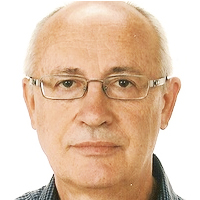CVS: An Effective Strategy to Prevent Bile Duct Injury
Published on: 2nd April, 2024
Background: Bile duct injuries have been substantially increased after the introduction of laparoscopic cholecystectomy (LC). These are accompanied by major morbidity and mortality. Studies have shown varying degrees of success in the reduction of bile duct injury (BDI) using the Critical View of Safety (CVS) technique. The aim of this study was to see the efficacy of the CVS technique as the sole method of dissection in laparoscopic cholecystectomy. Methods: 1647 cases of LC were done between January 2012 and January 2022 for a period of 10 years in two hospitals. All were operated by the CVS dissection technique and none by the infundibular technique. Cases included acute cholecystitis, chronic cholecystitis, gangrenous cholecystitis, empyema, and Gallbladder (GB) polyp. Results: The average operating time was 42 minutes and the range was 13 to 80 minutes. In 92% of cases, all 3 criteria of CVS were achieved. In the remaining 8% cases were either converted to open or operated by a division of GB or subtotal cholecystectomy was done. There was only one case of cystic duct stump leak requiring drainage and common bile duct stenting.Conclusion: The excellent outcome of our study suggests that the CVS method will be the gold standard technique in the dissection of the gallbladder in LC. Further dissemination of the technique is necessary to improve safety in LC.
Causal Mediation Analysis for Childhood Cancer Survival Disparity in Texas, 2005 to 2014
Published on: 29th March, 2024
This study aimed to examine the disparities of childhood cancer survival among different racial and ethnic groups in Texas. The analysis was mediated by socioeconomic status (SES) and spatial accessibility to Children Oncology Group (COG) hospitals. The relationship between race-ethnicity and overall survival was measured using the Cox proportional hazards model with a robust variance estimator. The counterfactual model measures the total effect of race-ethnicity on survival through all mediating pathways while adjusting for baseline confounders (age, sex, and stage at diagnosis), which are then decomposed into natural direct and indirect effects. Considering all cancer site groups, African Americans showed a statistically significant higher hazard ratio in death (HR = 3.63; 95% CI = 1.87 - 6.62) compared with non-Hispanic White children. At the same time, the mortality hazard ratio among Hispanic children is not significant (HR = 1.23; 95% CI = 0.80 - 1.93) when compared with non-Hispanic White children. Analysis results also suggested that both mediators significantly contribute to racial-ethnic survival disparities for specific cancer site groups such as Leukemia for African American children. This study builds knowledge and understanding about underlying factors (mediators) responsible for the disparities in the outcomes among childhood cancer patients.
Effect of Whitefly (Bemisia tabaci Genn.) Infestation on the Growth Parameters of Eggplant (Solanum melongena L.) in Kebbi State, Nigeria
Published on: 2nd April, 2024
Whiteflies (Bemisia tabaci Genn.) are aggressive hemipteran species that depend primarily on leaf tissue for their nourishment, causing substantial damages and yield losses in their hosts. This study was carried out to assess the effect of whitefly infestation on the growth parameters of one of the commercial eggplant cultivars (round green Solanum melongena L) under filed conditions. The trial consists of four treatments (T1= 15, T2= 30, T3= 45 and control (T4) = 0 whiteflies/plot) replicated four times. The result revealed that all the parameters assessed are negatively affected by whitefly infestation with plants in treatment (T3) being most affected while those in T1 are least affected. The dry weight recorded least value (1.1 g/leaf) having the highest percentage reduction (69.11%) followed by leaf area with 152.5cm2 (48.83% reduction) while the number of leaves was least affected recording 50.3 leaves/plant (18.09% reduction) at 90 days after infestation in 2022 experiment. In 2023 experiment, similar results were recorded with plants in T3 being most affected. Dry weight of the leaves had the lowest value (1.3g/leaf) representing the highest reduction (68.30%) followed by the leaf area with 167.3cm2 (44.8% reduction) with the number of leaves also being least affected, recording 52.1 leaves/plant representing 9.40% reduction with plants in treatment T1, at 90 days after infestation. The highest reduction in yield was also recorded with plants in T3 (92.10, 90.10%) while the least was observed in T1 (86.8 and 85.70%) for the respective trials (2022 and 2023). The result shows the level of susceptibility of the variety examined to whitefly infestation, demonstrating the urgent needs for the development of eco-friendly and sustainable whitefly management regimes for improved eggplant production in the area.
Time Electron Theory
Published on: 5th April, 2024
What is time? Is it a physical quantity, illusion, or dimension? Defining time is challenging and fascinating. We often consider time as a dimension to help us understand the concept of space-time. Time undeniably exists, but we can only sense its presence through its effects. For instance, if we take two apples, one bought months ago and the other just a day ago, we can tell that one apple was bought a long time ago because it had rotted. We express time as the effect caused by it. If there were no effects of time on this universe, then the concept of time would not exist [1,2].
Statistical Mathematical Analysis of COVID-19 at World Level
Published on: 5th April, 2024
Worldwide, statistical data of people infected by COVID-19 has been taken until March 29, 2023, which, when correlated, showed a predictive logistic model. The purpose was to determine the predictive model, which was acceptable, in such a way that the proportionality constant and the correlation and determination coefficients are of great importance to estimating epidemiological and pandemic data; coinciding with what was reported by other authors. Bearing in mind that a mathematical model is a mathematical description through a function or equation of a phenomenon in the real world; whose purpose is to understand infections and make predictions for the future. The stages were: to model the number of people infected as a function of time, formulate, and choose the logistic model, determine the model and obtain mathematical conclusions, and make predictions (estimates) about the number of people infected by COVID-19 worldwide. The logistic model was derived to predict the speed of people infected by COVID-19 and the critical time (tc = 733 days) for which the speed was maximum (1694,7209 infected/day). The Pearson correlation coefficient for the time elapsed (t) and the number of people infected (N) worldwide, based on 32 cases, was r = -0.88; the relationship between time and those infected is real, there is a “very strong correlation” between the time elapsed (t) and the number of people infected (N) and 77.03% of the variance in N is explained by t.
Morning and Evening Exercise with or without High-Pressure Intervals have Different Effects on Controlling Blood Sugar and Glucose Fluctuations in People with Type 1 and Type 2 Diabetes
Published on: 29th December, 2023
Summary: Exercise is recommended for the treatment and prevention of type 2 diabetes. Also, to control and reduce glucose fluctuations in people with type 1 diabetes. However, the most appropriate time and the most effective intensity of exercise is still unknown, and various studies provide different results and different recommendations, and none of the studies provide a comprehensive and practical result. We conducted our studies to examine the results and determine the effect of time and intensity of exercise on blood sugar control and glucose fluctuations during the day. Methods: search in PubMed and Google Scholar with keywords morning, evening, type 1 and 2 diabetes, exercise, interval, periodic, aerobic, and glucose and blood sugar fluctuations were performed. A total of 31 articles were reviewed and finally, 10 articles that were most related to each other or had complementary information were selected. Conclusion: HIIT exercises are useful for type 2 diabetes, but they are recommended for type 1 diabetes with less pressure. Morning exercise increases glucose and evening exercise is applicable for type 1 and 2 diabetes.
The Potential Use of Dimethyltryptamine against Ischemia-reperfusion Injury of the Brain
Published on: 19th April, 2024
Ischemia-Reperfusion Injury (IRI) is the outcome of two intertwined pathological processes resulting from the shortage of blood flow to tissues and the subsequent restoration of circulation to a previously ischemic area. IRI (sometimes just one side of the dyad) remains one of the most challenging problems in several branches of emergency medicine. Mitochondrial and endoplasmic reticulum dysfunction is a crucial pathological factor involved in the development of IRI. The sigma-1 receptor (Sig1-R) is an intracellular chaperone molecule located between the mitochondria and endoplasmic reticulum with an apparent physiological role in regulating signaling between these cell organelles and serves as a safety mechanism against cellular stress. Therefore, amelioration of IRI is reasonably expected by the activation of the Sig1-R chaperone. Indeed, under cellular stress, Sig1-R agonists improve mitochondrial respiration and optimize endoplasmic reticulum function by sustaining high-energy phosphate synthesis. The discovery that N, N-dimethyltryptamine (DMT) is an endogenous agonist of the Sig1-R may shed light on yet undiscovered physiological mechanisms and therapeutic potentials of this controversial hallucinogenic compound. In this article, the authors briefly overview the function of Sig1-R in cellular bioenergetics with a focus on the processes involved in IRI and summarize the results of their in vitro and in vivo DMT studies aiming at mitigating IRI. The authors conclude that the effect of DMT may involve a universal role in cellular protective mechanisms suggesting therapeutic potentials against different components and types of IRIs emerging in local and generalized brain ischemia after stroke or cardiac arrest.
Unlocking the Transformative Power of Synthetic Biology
Published on: 18th April, 2024
Artificial Intelligence (AI) combined with Synthetic Biology has the potential to change the way we approach medicine, agriculture, and manufacturing. AI automates tasks, optimizes experimental designs, and predicts biological behaviours, resulting in more efficient design and engineering of biological systems. However, there are challenges such as data limitations, interpretability issues, and ethical considerations like biosafety and biosecurity concerns that need to be addressed. AI can be used to analyze vast amounts of data and identify patterns. This has led to successful applications of AI in high-throughput screening and biomanufacturing, which can drive innovation and address critical challenges. AI-powered closed-loop systems for real-time monitoring and control of biological processes also show promise in providing real-time feedback and optimizing systems on the fly. Despite these advancements, it's important to consider ethical implications to ensure the responsible development and application of AI in synthetic biology. Proper consideration of challenges and ethical considerations can help leverage the power of AI to drive innovation and tackle pressing societal challenges. Overall, the potential of AI in synthetic biology is significant. By addressing challenges and ethical considerations, we can use them effectively to solve pressing problems.
Breast Cancer in Female
Published on: 22nd April, 2024
Anxiety is also a very common disorder, both in patients and their family members. Anxiety and stress can compromise the quality of life of cancer patients and their families. Feelings of anxiety and anguish can occur at various times of the disease path: during screening, waiting for test results, at diagnosis, during treatment or at the next stage due to concern about relapses. Anxiety and distress can affect the patient’s ability to cope with diagnosis or treatment, frequently causing reduced adherence to follow-up visits and examinations, indirectly increasing the risk of failure to detect a relapse, or a delay in treatment; and anxiety can increase the perception of pain, affect sleep, and accentuate nausea due to adjuvant therapies. Failure to identify and treat anxiety and depression in the context of cancer increases the risk of poor quality of life and potentially results in increased disease-related morbidity and mortality [1]. From all this we deduce the need and importance of dedicated psychological and psychiatric support for these patients within the Breast Unit. The fact that the psycho-oncologist who is dedicated to the care of patients with breast cancer must be an integrated figure in the multidisciplinary team of the Senological Center and not an external consultant is enshrined in the same European Directives that concern the legislation concerning the requirements that a Breast Unit must have in order to be considered a Full Breast Unit (Wilson AMR, et al. 2013).One of the most complex situations you find yourself dealing with is communication with the patient. This communication is particularly complex in two fragile subpopulations that are represented by women. [Menditto L. T (Tirannie) Cancer of the Breast. Am J Psychol & Brain Stud, 2023; 1(1):26-30].
Advancing Oral Health and Craniofacial Science through Microchip Implants
Published on: 25th April, 2024
Microchip implants have emerged as transformative tools in the realm of oral health and craniofacial science, offering novel solutions to longstanding challenges. This paper aims to explore the diverse applications of microchip technology in dentistry and craniofacial medicine, envisioning a future where these implants play a pivotal role in diagnostics, treatment modalities, and ongoing patient care. The integration of microchips enables real-time monitoring of oral conditions, facilitating early detection of dental issues and providing personalized treatment strategies. Additionally, these implants open avenues for smart prosthetics and orthodontic devices, optimizing patient comfort and treatment outcomes. However, ethical considerations, patient perceptions, and the societal impact of such technology should also be addressed. By examining the multifaceted implications and applications of microchip implants in oral health and craniofacial science, this research overview seeks to contribute valuable insights to the intersection of technology and healthcare in the dental domain.
Reducing CO2 in Passive House Adapted Low-cost Tropical Homes?
Published on: 26th April, 2024
The background of this novel study is how to apply an empirically adjusted Passive House concept in the tropics - beyond its otherwise prevailing global standards. Even though well-insulated houses have been on the planet since people settled down in some of their first dwellings, passive in the 21st century is different. It includes strict rules for airtightness and fitting of windows along with a sophisticated concept for artificial ventilation. Fresh air reachable from outside by filtered ventilation with heat recovery describes the heart of the system - if natural outside air is not preferable, it is convenient just in seasons with thermal comfort.Hence, the purpose and aim of the study presented here is to use a less common and at the same time more cost-saving approach: It might seem that the modern type of passive house entails the same standards that have been developed firmly on its own global market niche. However, this article tries to contribute toward a new development of modern passive homes for low-cost affordable tropical and subtropical houses in their entirety.As a concluding note, the author states that nobody has ever disproven this evolving concept as a combination of airtightness and a new way of forced ventilation without heat- or coolness recovery which is highly applicable for low-cost residential areas in tropical countries. By generating lower temperatures, it can help to surpass the overheating caused by climate change in certain tropical climate zones in higher altitudes and during cooler seasons. The condition is that the occupants are willing to accept a thermal comfort of up to 28 °C and humidity in its 70s and 80s.
Evaluation of Soil Water Characteristic Curves of Boron added Sand-bentonite Mixtures using the Evaporation Technique
Published on: 25th April, 2024
Compacted bentonite or sand-bentonite mixtures are considered buffer/backfill materials in the engineering barriers of deep geological repositories for high-level nuclear waste (HLW) disposal in many countries. The design and long-term functionality of nuclear repositories have critical importance for environmental safety and public health. The initially unsaturated buffer material could become re-saturated long after following the sealing of the repository. Although the saturation degree of the buffer might decrease due to high temperatures and evaporation, it tends to increase with groundwater intrusion. Therefore, the soil water characteristic curves (SWCCs) for these unsaturated soils are a key factor in geotechnical engineering. Yet, the determination of SWCCs can be time-consuming and prone to inaccuracies. The HYPROP (Hydraulic Property Analyzer) evaporation technique is a preferred method for accurately determining water retention curves of soils. This reliable method was applied to estimate the water retention curves for sand-bentonite mixtures in the presence of boron minerals. Known for their minimal thermal expansion and commonly used in various industries, boron minerals may improve the thermal stability of sand-bentonite mixtures. The findings revealed that the boron addition increased the water retention capacity of the 10% bentonite mixtures but had a negligible impact on the 20% bentonite mixtures.
A Critical Review on Some Recent Developments in Comparison of Biological Sequences
Published on: 25th April, 2024
The present review highlights some of the very important contributions to non-alignment ways of comparing biological sequences, which may be genome sequences of nucleotides, protein sequences of amino acids, or sequences of protein secondary structures. The discussion centers around specific methods applicable to the comparison of three types of sequences. The methods of comparison of genome sequences are based on three pairs of biological groups of nucleotides; the same for protein sequences are based on either physio-chemical property values of amino acids or on classified groups of amino acids of different cardinalities obtained from the physio-chemical properties; the same for sequences of secondary structures of proteins are based on their sequential expressions of structure elements of cardinality three and four. Comparison is made in the time domain and also in the frequency domain. Different taxa of known phylogeny are considered for comparison. It tries to find out the specific method of comparison, which can show the exact phylogeny of the taxa. If a new sequence appears in the database, it becomes essential to know its phylogeny. For this purpose, a phylogenetic tree is drawn on the sequences of the known taxa together with this new sequence using the best possible method. If the species having this new sequence belongs to the old taxa, there is nothing to worry about. Otherwise, the species with the new sequence has to be studied separately. This is the general reason for the construction of a phylogenetic tree in any form of biological sequence comparison.

HSPI: We're glad you're here. Please click "create a new Query" if you are a new visitor to our website and need further information from us.
If you are already a member of our network and need to keep track of any developments regarding a question you have already submitted, click "take me to my Query."
















